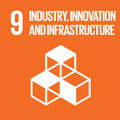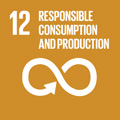- Docente: Giulio Malorgio
- Credits: 8
- SSD: AGR/01
- Language: Italian
- Moduli: Giulio Malorgio (Modulo Mod 2) Massimo Canali (Modulo Mod 1)
- Teaching Mode: In-person learning (entirely or partially) (Modulo Mod 2); In-person learning (entirely or partially) (Modulo Mod 1)
- Campus: Cesena
- Corso: First cycle degree programme (L) in Viticulture and Enology (cod. 8527)
-
from Sep 20, 2024 to Dec 13, 2024
-
from Sep 23, 2024 to Dec 16, 2024
Learning outcomes
At the end of the course the student: - possesses the basic concepts of the socio-economic variables that characterize and condition the evolution of the wine sector. - will be able to analyze the factors that influence the demand, supply and market conditions of wine products, as well as the existing interrelationships between operators along the wine chain. - acquires the essential tools to understand the structure and functioning of companies, to analyze the economic-financial consequences of company decisions, as well as the fundamentals of strategic and organizational analysis of the winery. - will be able to analyze and evaluate, using appropriate tools, the processes and results of investment projects in the wine sector. - will be able to adequately communicate the knowledge acquired with sufficient command of the specific terminology.
Course contents
The course is divided into two modules:
Module 1: Economics of the wine sector (4 credits, 40 hours)
Module 2: Management and administration of wineries (4 credits, 40 hours)
Module 1 – Wine Economics
Principles of economics applied to the wine market:
- The object of study of economics and the development of its basic concepts;
- Analysing demand and the consumer’s behaviour;
- Production theory and the entrepreneur’s behaviour;
- Production costs and the supply curve;
- Balance in competitive markets;
- Supply and demand elasticity;
- The peculiarities of food products' supply and demand;
- The market structure: monopoly, oligopoly and monopolistic competition;
The wine industry in Italy and its role in the agri-food system:
- Winegrowers' holdings;
- Wine processing and the segmentation of the wine supply chain;
- The wines with protected denomination of origin;
- Wine consumption and markets;
- Food-and-wine tourism;
- Wine foreign trade and the agri-food trade balance;
The global wine market:
- Global dynamics of wine production and consumption;
- The positioning of Italian wines in the global wine market.
Wine policies:
- Wine international organizations and international standards;
- Wine production in the Common Agricultural Policy: the Common Organization of the wine market; quality protection policies; development policies for the industry.
Module 2: The business system and the economic management of the enterprise
1. Definitions, classification and legal forms of the enterprise. The factors of production and their evaluation 2. Aspects of business management: financial, economic, asset management. Financial and economic balance of the company. 3. Evaluation of the company's cost-effectiveness: the financial statements; reclassification and analysis of the balance sheet and income statement. The assets and liabilities components of the balance sheet. The income and expense components of the income statement. 4. Global measurement values of corporate efficiency: the formation of balance sheet quotients relating to assets and income components. 5. The cost of grape and wine production: variable costs, fixed costs and break even points. 6. Economic analysis of investments: business plan, cash flows, Net present value, Internal rate of return. 2. Tutorials Practical applications concerning the economic and financial management of food businesses.
Exercises: analysis of the financial statements of a winery. Exercises of a business plan for the realization of a wine development plan
Readings/Bibliography
Lecture notes (downloadable from the website)
Torquati B. Economia e gestione dell'impresa agraria. Edagricole, 2003
Gregori M., Galletto L., Malorgio G., Pomarici E., Rossetto L.. Il marketing del vino. EDISES, Napoli. 2017Teaching methods
During the course, some case studies on the economic management of the wine-growing company and the policy of the wine-growing sector will be examined and discussed with an exercise in the economic-financial analysis of the company
Assessment methods
The knowledge of the topics presented in class and the verification of the skills acquired requires - on both teaching modules which cannot be distinguished during the verification - written tests. Each of the two partial tests is evaluated with a score out of thirty; the final grade is determined by the examining commission and usually coincides with the weighted average of the two partial grades. The exam is considered passed if both modules are passed. The final mark will be determined by the average of the two marks obtained. Module 1: Written test with multiple choice questions and integrative oral test at student’s request (the evaluation elements will be: the level of knowledge of the topics covered by the exam questions; the presentation ability and the appropriate use of the terminology of the discipline; the constant attendance of the lessons, the active participation and the eventual development of activities agreed with the teacher).
Module 2: Verification of learning takes place through the final exam only, which ascertains the acquisition of the expected knowledge and skills by carrying out a written test lasting 1 hour without the help of notes or books. The written test consists of some simple exercises relating to the analysis of the financial statements in order to evaluate the ability to arrive at the solution of practical problems, and of 16 multiple choice questions in order to ascertain the knowledge of the theoretical aspects of the topics covered during the lessons. To take the exam, registration is required via the electronic bulletin board provided for by the Alma Esami online system, in compliance with the set deadlines. Those who fail to enroll by the scheduled date are required to promptly notify the teacher (and in any case before the closure of the enrollment lists). Out-of-course students can contact the teacher to agree on a possible out-of-call exam.
Teaching tools
PC, Internet
Office hours
See the website of Giulio Malorgio
See the website of Massimo Canali
SDGs


This teaching activity contributes to the achievement of the Sustainable Development Goals of the UN 2030 Agenda.
